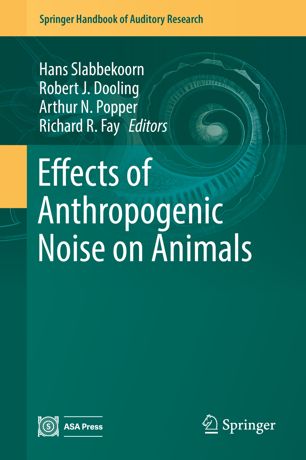

Most ebook files are in PDF format, so you can easily read them using various software such as Foxit Reader or directly on the Google Chrome browser.
Some ebook files are released by publishers in other formats such as .awz, .mobi, .epub, .fb2, etc. You may need to install specific software to read these formats on mobile/PC, such as Calibre.
Please read the tutorial at this link: https://ebookbell.com/faq
We offer FREE conversion to the popular formats you request; however, this may take some time. Therefore, right after payment, please email us, and we will try to provide the service as quickly as possible.
For some exceptional file formats or broken links (if any), please refrain from opening any disputes. Instead, email us first, and we will try to assist within a maximum of 6 hours.
EbookBell Team

4.4
22 reviewsOver the past several years, many investigators interested in the effects of man-made sounds on animals have come to realize that there is much to gain from studying the broader literature on hearing sound and the effects of sound as well as data from the effects on humans. It has also become clear that knowledge of the effects of sound on one group of animals (e.g., birds or frogs) can guide studies on other groups (e.g., marine mammals or fishes) and that a review of all such studies together would be very useful to get a better understanding of the general principles and underlying cochlear and cognitive mechanisms that explain damage, disturbance, and deterrence across taxa.
The purpose of this volume, then, is to provide a comprehensive review of the effects of man-made sounds on animals, with the goal of fulfilling two major needs. First, it was thought to be important to bring together data on sound and bioacoustics that have implications across all taxa (including humans) so that such information is generally available to the community of scholars interested in the effects of sound. This is done in Chaps. 2-5. Second, in Chaps. 6-10, the volume brings together what is known about the effects of sound on diverse vertebrate taxa so that investigators with interests in specific groups can learn from the data and experimental approaches from other species. Put another way, having an overview of the similarities and discrepancies among various animal groups and insight into the “how and why” will benefit the overall conceptual understanding, applications in society, and all future research.